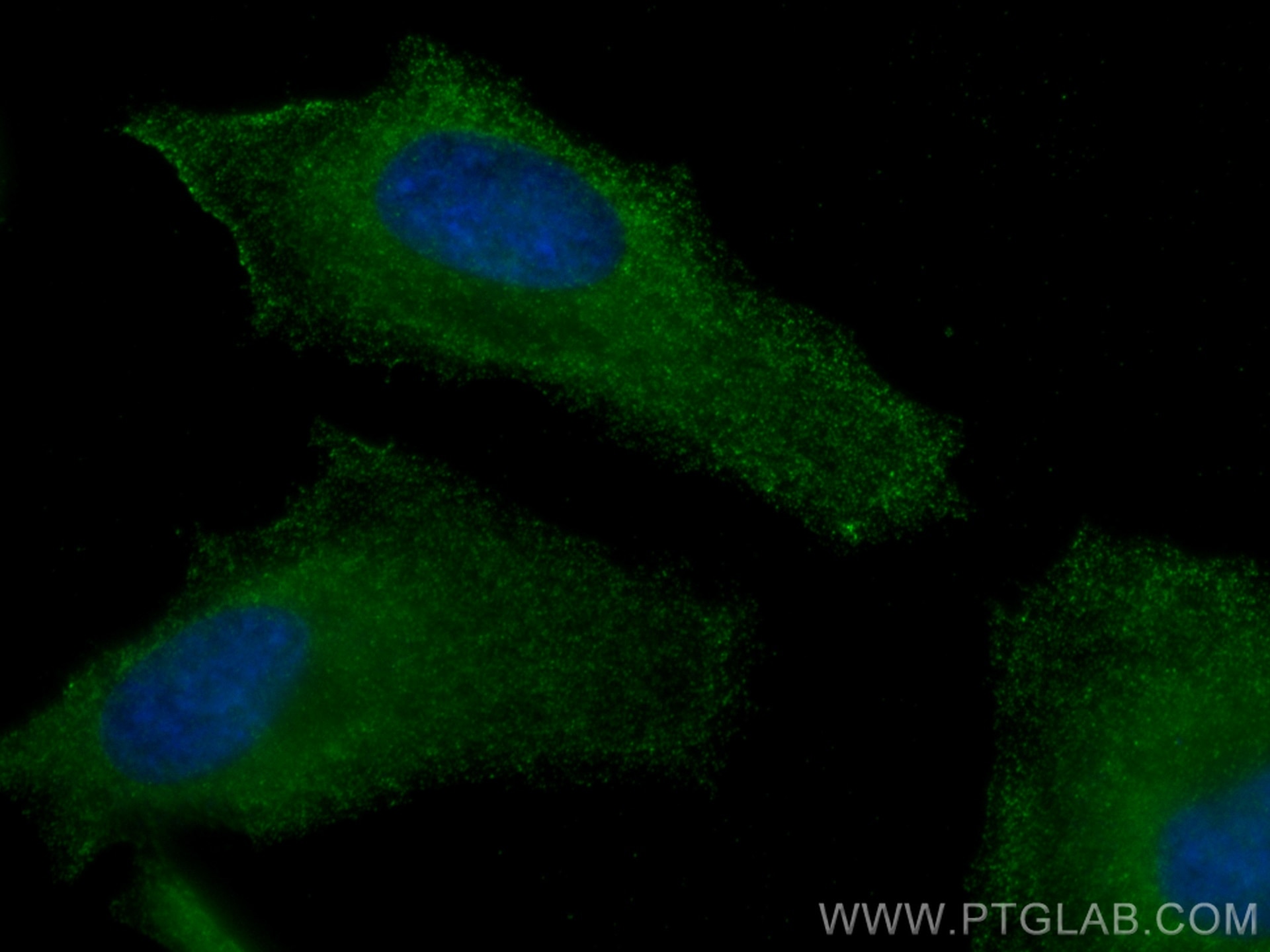Anticorps Monoclonal anti-TBC1D4
TBC1D4 Monoclonal Antibody for IF
Hôte / Isotype
Mouse / IgG1
Réactivité testée
Humain
Applications
IF
Conjugaison
CoraLite® Plus 488 Fluorescent Dye
CloneNo.
1E2H2
N° de cat : CL488-68063
Synonymes
Galerie de données de validation
Applications testées
| Résultats positifs en IF | cellules HeLa, |
Dilution recommandée
| Application | Dilution |
|---|---|
| Immunofluorescence (IF) | IF : 1:250-1:1000 |
| It is recommended that this reagent should be titrated in each testing system to obtain optimal results. | |
| Sample-dependent, check data in validation data gallery | |
Informations sur le produit
CL488-68063 cible TBC1D4 dans les applications de IF et montre une réactivité avec des échantillons Humain
| Réactivité | Humain |
| Hôte / Isotype | Mouse / IgG1 |
| Clonalité | Monoclonal |
| Type | Anticorps |
| Immunogène | TBC1D4 Protéine recombinante Ag20341 |
| Nom complet | TBC1 domain family, member 4 |
| Masse moléculaire calculée | 1299 aa, 147 kDa |
| Poids moléculaire observé | 160 kDa |
| Numéro d’acquisition GenBank | BC151239 |
| Symbole du gène | TBC1D4 |
| Identification du gène (NCBI) | 9882 |
| Conjugaison | CoraLite® Plus 488 Fluorescent Dye |
| Excitation/Emission maxima wavelengths | 493 nm / 522 nm |
| Forme | Liquide |
| Méthode de purification | Purification par protéine G |
| Tampon de stockage | PBS avec glycérol à 50 %, Proclin300 à 0,05 % et BSA à 0,5 %, pH 7,3. |
| Conditions de stockage | Stocker à -20 °C. Éviter toute exposition à la lumière. Stable pendant un an après l'expédition. L'aliquotage n'est pas nécessaire pour le stockage à -20oC Les 20ul contiennent 0,1% de BSA. |
Informations générales
TBC1D4, also named as AS160, KIAA0603, may act as a GTPase-activating protein for RAB2A, RAB8A, RAB10 and RAB14. Isoform 2 promotes insulin-induced glucose transporter SLC2A4/GLUT4 translocation at the plasma membrane, thus increasing glucose uptake.
Protocole
| Product Specific Protocols | |
|---|---|
| IF protocol for CL Plus 488 TBC1D4 antibody CL488-68063 | Download protocol |
| Standard Protocols | |
|---|---|
| Click here to view our Standard Protocols |


